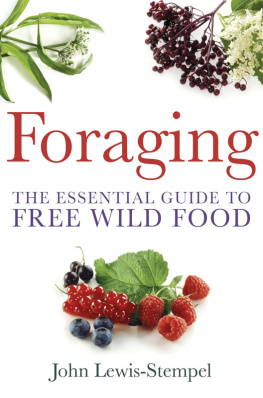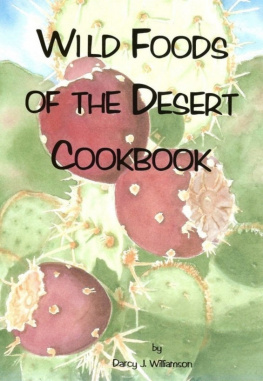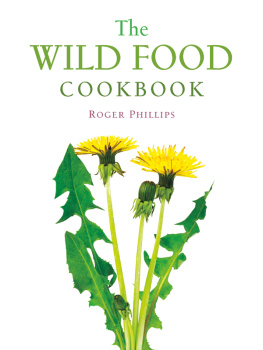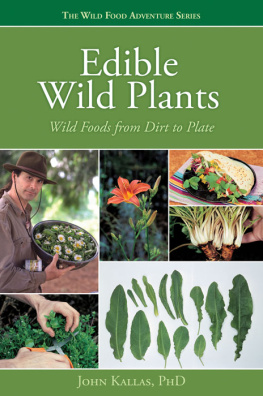'Wild at Heart' is a growing business selling a range of award-winning, artisan-made jellies, relishes and fruit cheeses, inspired by the wild, native or ancient fruits and based on traditional English recipes. it was set up by Ginny Knox and and Caro Wilson. At school together they had shared many happy, sun-soaked days roaming the nearby fields and hedgerows, collecting crab apples and brambles to make into cakes, jellies and other delicious things. They both feel passionate about wild food, which is by definition local, seasonal, fresh and low in food miles. Not only this, but foods which grow in proximity on the same land are more likely to complement each other. Most importantly, gathering and cooking these foods is fabulous fun and directly connects us to our cultural heritage and helps bind us together as a community.
www.wildatheartfoods.co.uk



For our children: Adam, Ollie, John, Sam, Fizz and Mad, who we hope will grow to love the English countryside as much as we do.
First published in 2013 by Pavilion Books
An imprint of Anova Books
10 Southcombe Street
London W14 ORA
www.anovabooks.com
Copyright Anova Books Company Limited 2013
Text copyright: Wild at Heart 2013
All rights reserved. No part of this work may be reproduced, or utilized in any form or by any means, electronic or mechanical, including photocopying, recording, or by any information storage and retrieval system without the prior permission of the publishers.
First eBook publication 2013
eBook ISBN: 978-1-90910-8752
Also available in hardback
Hardback ISBN: 978-1-86205-9566
Commissioning editor: Fiona Holman
Art director: Georgina Hewitt
Photographer: Cristian Barnett
Designer: Allan Somerville
Copy editor: Maggie Ramsay
Introduction
The inspiration for our company, Wild at Heart, came from our kitchen windows: Caros gazing at Kentish orchards with their neat rows of cultivated apple trees, punctuated by bright red or yellow crab apples, and Ginnys overlooking the commons of Surrey, fringed with hedges of damson and sloe.
We have been friends more or less for ever, with a shared and abiding passion for food: making it, reading about it, talking about it and eating lots of it. As children we scoured the hedgerows of Sussex with our mothers, braving nettles and thorns for the prize of a sweet, juicy blackberry crumble. And our delight in foraging has grown over the years. We each have cupboards bursting with little pots of rich purple damson cheese and jewel-like crab apple jelly, bottles of dark, fruity sloe gin and heady elderflower cordial. Cupboards we cant resist peeking at on grey winter days, to raise a smile and make our hearts swell.
Having slaved at our careers in very large finance and food companies respectively for well over 20 years, we realized we were both yearning for a change of pace and direction. We decided to do something together and it was obvious that the something would hark back to our shared foodie roots.
So, we set out to rediscover the pleasures of wild, native or ancient fruits that had perhaps been overlooked in this supermarket age of perfect strawberries all year round and hang the air miles. The laying down of bottles and jars during the autumn to sustain us until spring is one of the most deeply satisfying things a cook can do. A whiff of homemade raspberry jam instantly conjures up an early summers day, a tangy pot of chutney celebrates the abundance of harvest time and transforms a sad wedge of cheddar cheese into a glorious lunch.
We have been inspired by natures bounty but not bound by it. The discovery of an ancient quince or medlar tree in a long-neglected kitchen garden is as much cause for celebration as a basketful of berries collected during a country walk. Indeed the line between wild and cultivated is often pretty thin and we havent felt the need for a strict wild-only straitjacket, preferring instead to call our freely gathered ingredients wild, native, ancient or otherwise unfashionable.
We also wanted to make food that would taste homemade because it was wholesome and true. A preparation of mint, crab apples, vinegar and sugar or one made with water, colouring, gelling agent and mint oil? Both are called mint jelly, but which would you rather have on your plate, which would you make at home? This is the ethos of the foods we sell and it underpins the recipes in this book.
And so, in March 2011, having spent an autumn picking fruit until we could barely move and a winter boiling away like witches at their cauldrons, we started selling our traditional accompaniments for meats and cheeses under the name Wild at Heart: fruity crab apple and medlar jellies, little pots of damson and quince cheeses, rich wild plum chutney and mellow red onion marmalade. We were completely blown away by the response from our customers, the press and serious food experts. It was an amazing first year. Our absolutely best moments, though, were when someone tasted, say, our crab apple jelly, and was delightedly transported back to their childhood and, almost invariably, something their mother or grandmother used to make.
We gradually built up a loyal customer base through local farm shops, delis and butchers. In our second year we were able to secure larger supplies of our rare, fruity raw materials directly from local farmers and nurserymen, and Wild at Heart secured its first multiple listing. We are now excitedly making plans for new products and new distribution and looking forward to meeting more wonderfully dedicated food enthusiasts on the way!


The discovery of an ancient quince or medlar tree in a long-neglected kitchen garden is as much cause for celebration as a basketful of berries collected during a country walk
From there it was a very short step to the idea of a book that would celebrate many of the wonderful things that can be made by scouring the hedgerows, the woods and the lanes. Preserves, of course, but also drinks, savoury dishes, puddings, cakes, sweets and treats. Recipes to enjoy in season and stores to lay down for the leaner months. Above all, food that tastes utterly delicious. This is very important: there are masses of edible wild plants and fruits that we have not included because they are hard to find, hard to identify or just dont taste very nice! We firmly believe that foraging should be a pleasure, one that connects us to the very specific area in which we live, what grows there, what tastes good there. Food for free is wonderful as long as it also delivers on taste: we are not interested in hair shirts and we dont believe you will be, either.
However, we have discovered that deciding what to leave out of a book is much trickier than deciding what to put in it. Inevitably one book cant cover every delicious food you could forage, let alone the ones that we feel are overrated, such as wild sorrel (definitely not a patch on its cultivated version). We have also found ourselves reluctantly leaving out whole types of food such as roots (legality of gathering quite dubious), mushrooms (need their own book, as misidentification can have such serious consequences) and seaweeds (a bit impracticable for most people who dont live by the sea). And thats before we even started trying to whittle down our recipe list to the hundred or so we have had space to include!
















